The Blue Hope Alliance: community engagement and citizen science at its best
I've recently had the chance to meet with members of the Blue Hope Alliance. Now they've shared insights and images about their latest efforts to protect maerl beds in Scotland - great stuff!
When it comes to habitat protection, laws are not enough. It takes vigilance and monitoring and, above all, it takes engaged communities to safeguard the often fragile ecosystems from coming to harm. Here’s the story of one such amazingly engaged community-led alliance and how they go about protecting Scotland’s endangered maerl beds.
When I was in Scotland in March and April of this year, I got to meet with two members of the Blue Hope Alliance: Nicky Middleton-Jones, the alliance project officer, and Sara Nason, Blue Hope Alliance coordinator, founding member and filmmaker. They told me about maerl - rare and important coral-like marine habitats - and how the Blue Hope Alliance has brought together a wide spectrum of the communities around Scotland’s Northwest coastline to safeguard this supremely special habitat.
To learn all about maerl and my then visit, go here.
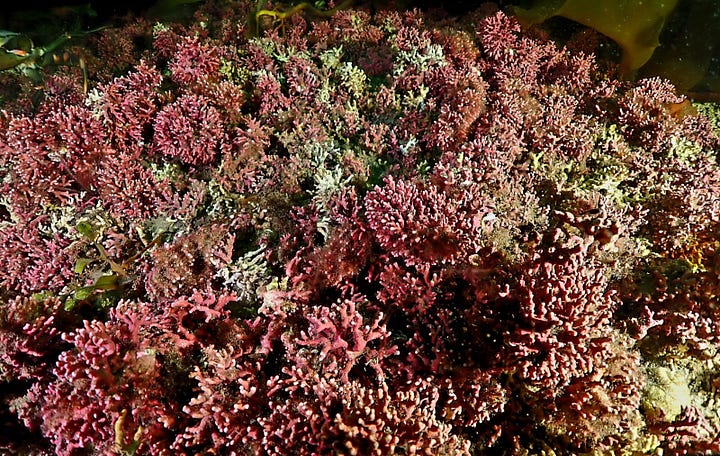
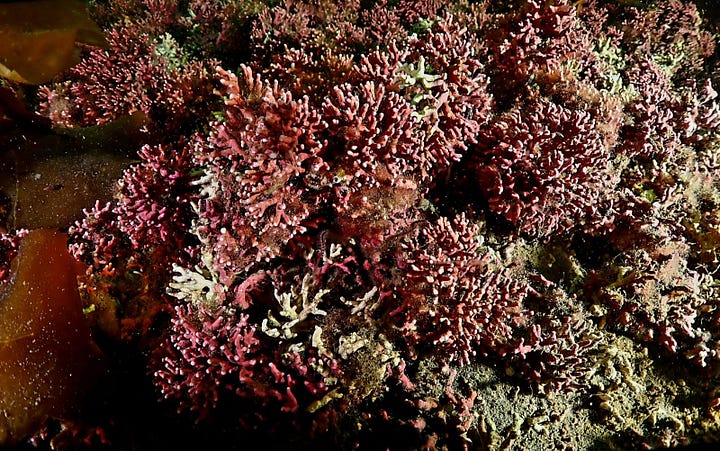
The members of the Alliance have been monitoring maerl beds for ten years already - with a zest and discipline that is staggering. They been diving time and time again to collect data and have amassed an open-source archive to document, to inform, to educate and to inspire.
And since my time with them, the Blue Hope Alliance has once again shown its community strength in stellar fashion. After a great deal of planning, they brought together volunteer divers and instructors, skippers and community citizen scientists , supported by one of BHA’s marine science advisors, for a transect training that led to the first formal maerl survey in that part of Loch Torridon for more than twenty years.
It began in a swimming pool
Before tackling the real deal, divers (some just starting out, others with hundreds of dives) came together to learn how to: lay a 25-meter transect line on the seabed using road pins and ground screws; position a 0.5m frame at 20 randomized points along that transect; take paired photographs, using purpose-designed camera rigs, record critical meta data and GPS data; and, of course, how to operate safely as buddy teams in the murky depths.
After cramming theory in a workshop, it was time to hit the pool for attendees from, among others, the Kishorn Sea Rangers, Applecross Sea Rangers, Maerl Friends of Loch Torridon, and Seabed and Seashore Loch Ewe. To give you a sense of that aforementioned strength of community, here are a few images from the training session. As one participant shared, “The energy was amazing, the enthusiasm contagious, and the connections made — both personal and professional — will ripple out into future projects and collaborations.”
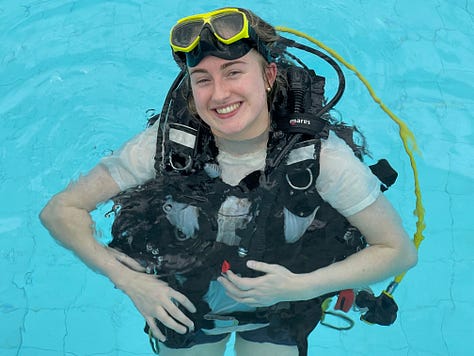

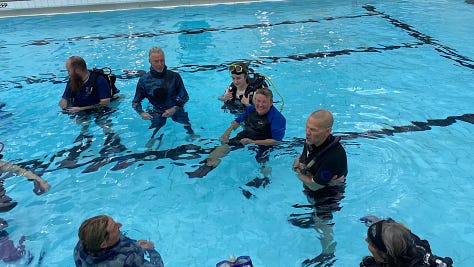
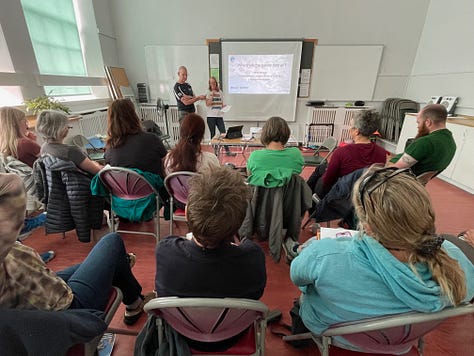
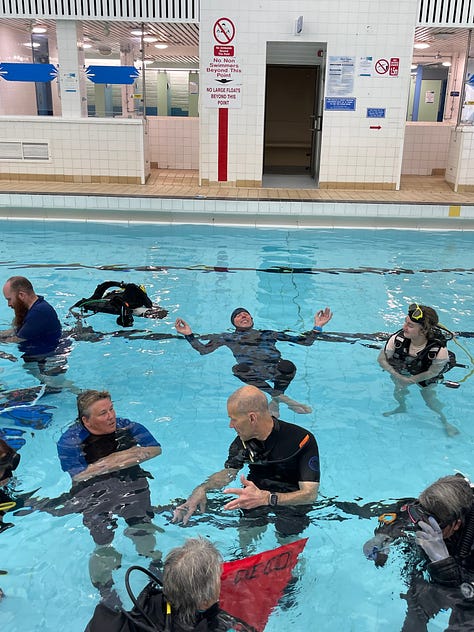
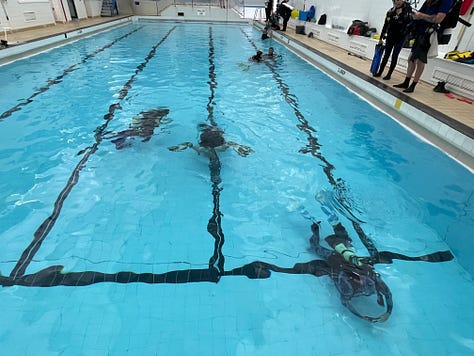
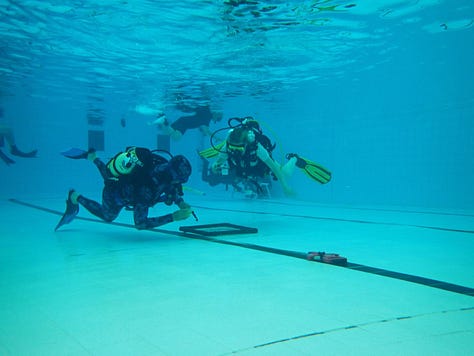
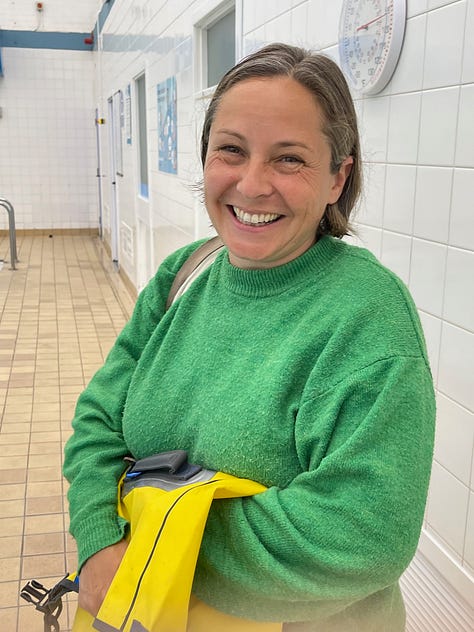
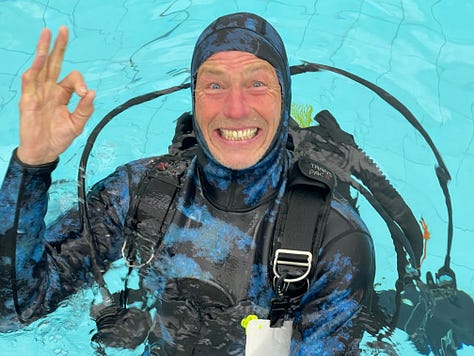
The day it all came together
For the day of the dive, the 15th of June, everything was meticulously planned. Every survey and safety protocol was rehearsed and refreshed, all the equipment was checked and checked again. Everyone was ready and eager to go - and quite a bit anxious because in Scotland the weather is always good for a surprise. Nicky Middleton-Jones recounts, “As the day approached, anxious conversations swirled around the weather. Forecasts were scanned obsessively, wind direction debated, and contingency plans (Plan B’s and Cs) were drafted. High westerlies threatened to turn the loch into a bubbling cauldron.”
Before the date, Maerl Friends of Loch Torridon worked hard to support the alliance’s transect training in the sealoch they take care of, by supplying local dive boats. Alliance coordinator Sara Nason joined the skippers with BHA’s science advisor to check potential dive sites and a dive confirmed, despite poor visibility stirred up by tide and weather, the presence of maerl beds that would be surveyed. And then, on the 15th, everything came together just as planned. The waters were calm and the winds mercifully gentle - it was time to rock-n-dive.
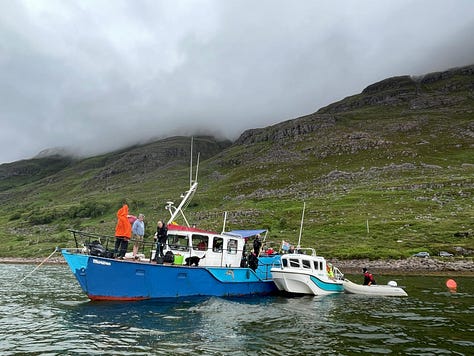
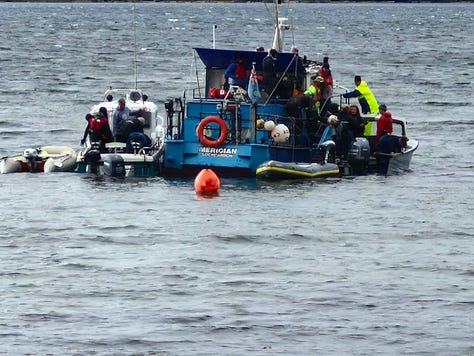

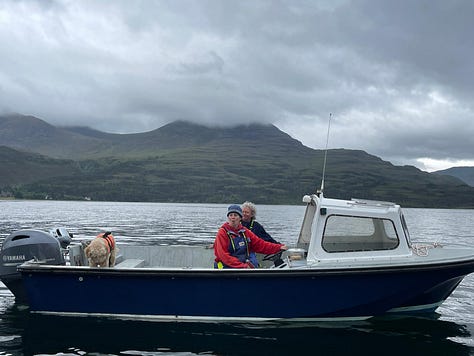
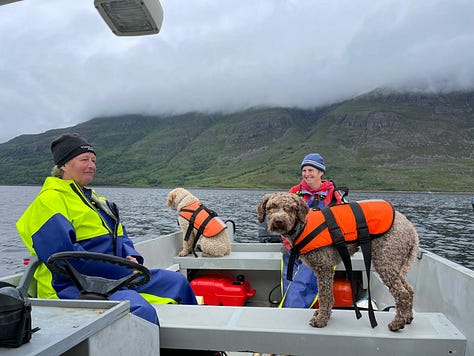
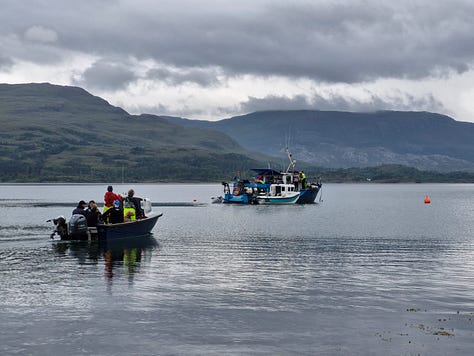
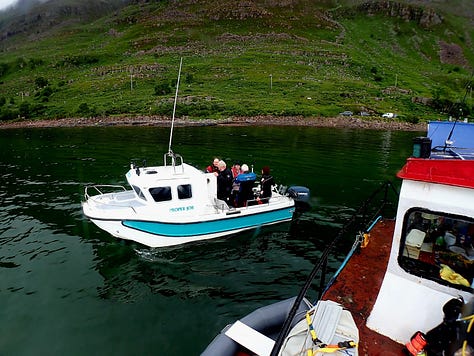
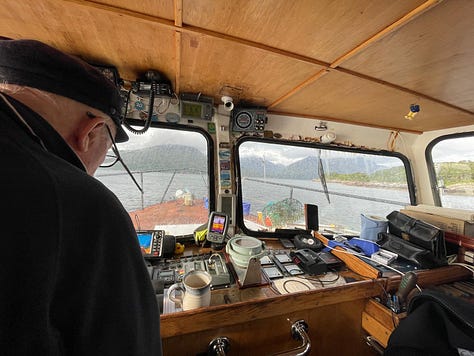

The world below
All too often, what happens below the surface of the oceans still doesn’t seem to be noticed enough by the general public to affect behavior. And so industries have been getting away with bottom trawling, refuse dumping (incl. open-net salmon farms), mining and other means of habitat destruction for decades. It is only now that policy and public behavior seems to shift - and that is due to the efforts from the likes of David Attenborough, and of the Blue Hope Alliance!
On the 15th then, the Blue Hope Alliance continued their work of monitoring, of scientifically documenting exactly what is there. These efforts help gauge progress, they also help to highlight challenges - and they most certainly help to shape policy with lawmakers in Edinburgh.
But I doubt the divers could think about lawmakers and policy as they laid the transect lines, set them, marked them, documented the findings with their camera rigs, noted down species presence. The following images illustrate the intense focuse on the tasks at hand - and, of course, their diving buddies.
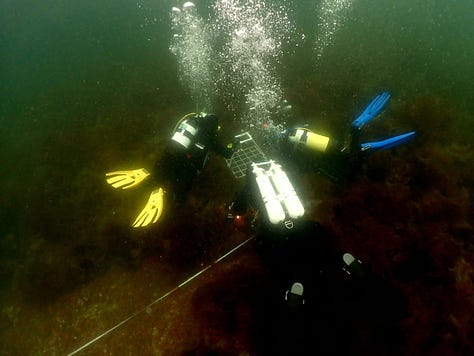
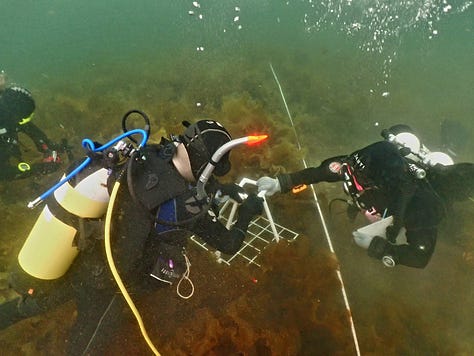
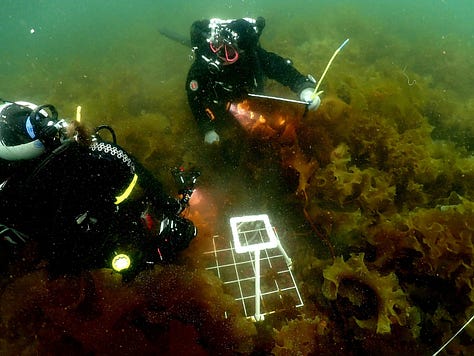
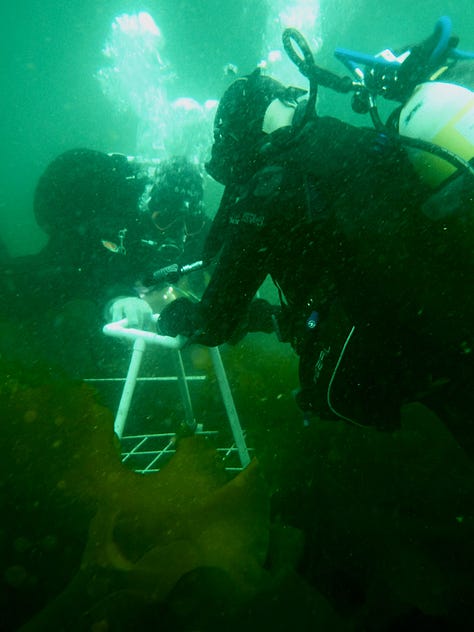
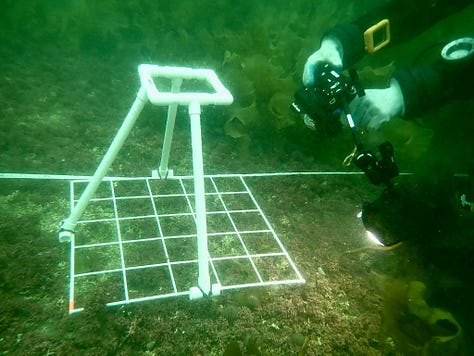
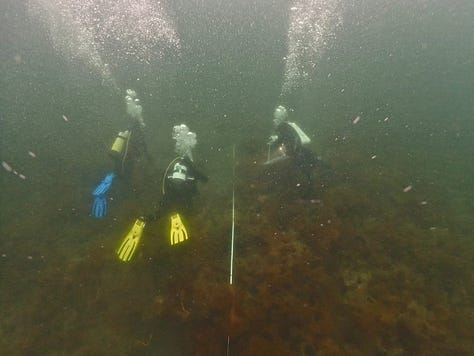
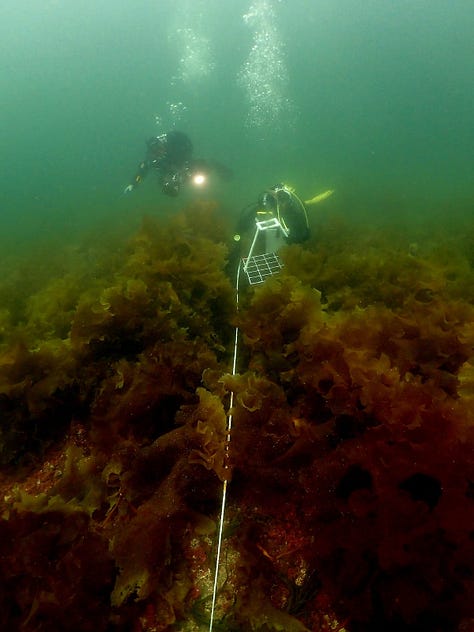
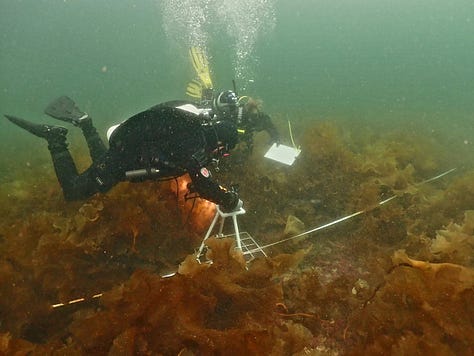
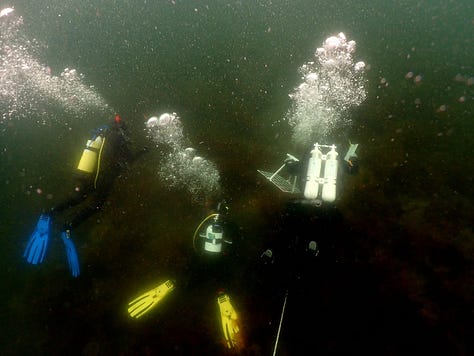
When all was said and done, two permanent twenty-five-meter transects had been installed, over one hundred paired photographs had been captured, metadata, GPS fixes and compass bearings had been collected - and fifteen new citizen scientists had proven their mettle with advanced survey techniques.
Nicky summed it all up in this way: “It was the first formal maerl survey in Upper Loch Torridon in 20+ years — and every inch of it was made possible by community, collaboration, and a lot of heart. Future surveys are already being planned for Applecross and Kishorn. Some trainees left inspired to form their own community groups. Who knows — we might even see new marine groups and maerl friends pop up as a result!”
I think I already mentioned it in my last article, well, let me mention it again - I think what the Blue Hope Alliance does is first-rate local community engagement. What they do, and how they do it, inspires the local population, creates shared goals, purpose and pride and is, without a doubt, the single best way to protect nature and give it the chance and time it needs to recover. Laws alone are never enough - the real difference comes from caring people coming together to form strong and passionately engaged communities.
A special thanks to Nicky and Sara for all the insights and images and I can only recommend following the Blue Hope Alliance, signing up for their newsletter and - in any way you can - supporting them.
Cheers,
If nature recovery is important to you …
… consider supporting the Rewilder Weekly. The rewilding movement is growing, and needs to grow a great deal more! Your subscription ensures that the Rewilder Weekly will always be around to reach, inspire and active more people around the world. Thank you for your support!
Eager for more rewilding insights?
connect with these organizations - sign up for newsletters and support them in any way you can;
join these events - conferences, online seminars, rewilding days and weeks to immerse yourself and learn from the experts;
read these books - a selection from Foreman to Macdonald, and from Tree to Daltun, Hetherington and Bowser;
listen to these podcasts - it’s inevitably inspiring when the likes of James Shooter, Ben Goldsmith and Brooke Mitchell talk to the pros in the field;
and check out these resources - explore the principles, ways of funding, research publications and personal ways to start rewilding.
And, of course, connect with and follow the many passionately engaged rewilders. Let’s keep growing the movement! 🦬🌳🐺🌞🌍







